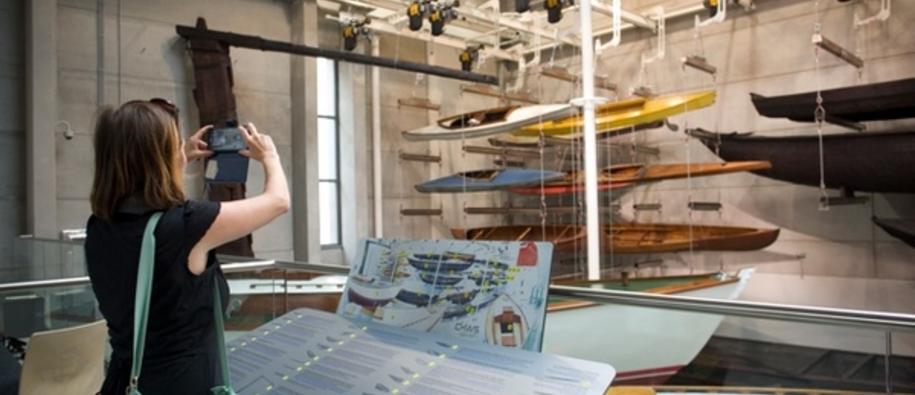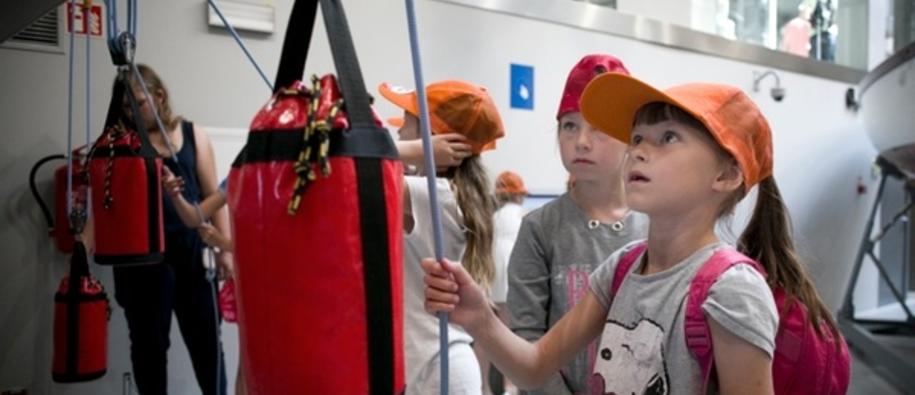The Shipwreck Conservation Centre is one of the few places in Poland where the public can learn about the old construction techniques for building boats and ships, explore the history of Polish maritime traditions, observe the museum conservators at work and take part in the interactive educational offer.
Engaging visitors
An innovative solution introduced in the new branch is a combination of space dedicated to a conservation workshop and a studio warehouse. The studio warehouse, which is accessible to the public, allows the visitors to not only see the unique collections of restored shipwreck artifacts such as medieval dugouts, boats and kayaks, but also to take part in the life of the institution and observe the artifacts’ conservation and restoration process.
The museum is financed by Iceland, Liechtenstein and Norway through the EEA Grants, and aims to offer an innovative and interactive educational programme, where children and young people can come and learn more about shipwreck artifacts, historic yachts and Baltic wrecks. The mobile app ‘Yachts and wrecks’ – a virtual guide around the museum – offer interactive presentations of the restored shipwreck artifacts at display, while educational games allow the children to act the part of a captain on a big passenger ship or a boat builder constructing a medieval ship.
Grand opening
The official opening ceremony of the Shipwreck Conservation Centre was attended by over 150 guests, including the Norwegian Ambassador to Poland, Karsten Klepsvik. In his remarks, Ambassador Klepsvik emphasised the long standing maritime traditions shared by both Poland and Norway:
“The Shipwreck Conservation Centre offers a great opportunity to cultivate those traditions, and display both maritime cultural heritage and contemporary achievements in shipbuilding industry,” Ambassador Klepsvik said.
Present at the ceremony was also representatives from the Norwegian Maritime Museum. Together with the Museum of Cultural History, University of Oslo, they have been partners in the project.
“It is difficult to find the words that can describe what we have gained from participating in the project. We’ve liaised with international counterparts, and have received new and updated professional competence. We are very impressed with what the National Maritime Museum in Gdansk has achieved, and we’ve found it both inspiring and exciting to participate in the project,” says Monica Hovdan from the Norwegian Maritime Museum.
The Maritime Museum, which is located in Oslo, has shared theoretical and practical knowledge – as well as experience – related to conservation and restoration of maritime artifacts.
“We quickly realised that we work on a lot of the same issues, and that we could benefit greatly from mutual cooperation,” says Hovdan.
Good working conditions
The Shipwreck Conservation Centre provides excellent working conditions for the museum conservators from the National Maritime Museum in Gdansk. The conservators have modern and well-equipped workplaces at their disposal, and the available equipment allow for proper reconstruction and conservation processes.
When the centre opened earlier this year, the visitors were able to experience the new branch inside and out, and visit parts of the museum that aren’t accessible every day, such as the X-ray laboratory and the 3D modelling workshop. Curators and educators were available for questions and conversations, and were happy to share information about the exhibitions and the work behind the conservation processes.
“We operate within a very specific thematic niche, but feedback given by visitors confirms that the unconventional solutions are welcomed by the people visiting the Maritime Museum in Gdansk,” concludes Szymon Kulas, Deputy Director of the National Maritime Museum and project manager.




